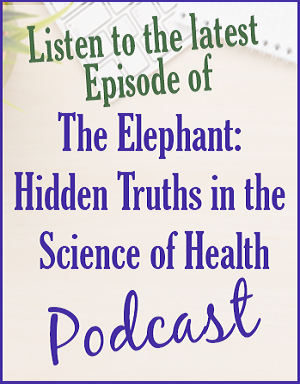Larry A. Law
Linoleic Acid (LA)
But besides the problem of overdiagnosing melanoma, there is a huge misperception that sunlight causes melanoma. Studies, as far back as 1987, suggested there was a statistically significant link between polyunsaturated fats and melanoma. Linoleic acid (LA) is the primary fat found in omega-6 polyunsaturated fats including vegetable and seed oils. LA accounts for 80% of the fat composition of vegetable oils. Omega-6 fats must be balanced with omega-3 fats to reduce their harm. Unfortunately, the American diet is extremely tilted to the omega-6 side. Vegetable oil first appeared in the 1930s, but by the 1950s they had replaced animal fats under the erroneous assumption that vegetable oils were healthier. We now know that vegetable oil is absolutely the worst cooking oil for your health.
Hazards of LA
Most of the omega-6 people consume, including seed oils, has been damaged and oxidized through processing and refining the oil. Once oxidized, LA metabolites (substances) are generated; these are mutagenic (capable of inducing genetic mutations), cytotoxic (toxic to the cell), carcinogenic (cancer causing), and atherogenic (creating fatty plaques in the heart and circulatory system). That's quite a list of harmful consequences! LA is found in virtually every processed food, including restaurant foods, sauces and salad dressings.
Optimal Levels of Vitamin D
Vitamin D is essential for optimal immune system function and cellular health. Sunlight on our skin is the way the body is able to create it. Vitamin D deficiency is currently epidemic (in the USA), significantly increasing the risk of diabetes, heart disease, breast and colon cancer, lung disease, and pregnancy loss. A compelling body of research suggests that the ideal level of vitamin D for prevention of disease is between 60 and 80 ng/mL. It requires 9,600 IUs (international units) of vitamin D each day to reach 40 ng/mL. Even that's a far cry from today's paltry US RDA (official minimum) recommendation of 600 IUs.
Sunscreen
Remember, the sun does not cause melanoma. Skin needs sunlight to make vitamin D, which is crucial to maintaining a healthy immune system. Yes, protect your skin from excessive ultraviolet (UV) radiation if you are going to be outside long enough to cause a blistering sunburn. Shirts, hats, and sunglasses can go a long way to reducing that threat. But allow the melalin in your skin to darken over time, thus increasing your safe exposure time. Above all, avoid harmful sunscreens! These are clearly identified and described in my book (page 80) or in the Wellness Support Group webinar entitled Sunscreen and Vitamin D. Most sunscreens on the market are incredibly harmful. They are serious endocrine disruptors that get absorbed through the skin and cause damaging side effects. Researchers in 2021 tested 294 sunscreen products, finding that 78 of them contained three times the level of benzene allowed by the Food and Drug Administration (FDA). Benzene is an industrial chemical recognized by the Centers for Disease Control (CDC), US Health and Human Services (HHS), and the World Health Organization (WHO) as a known human carcinogen.
Bottom Line
Overdiagnosis of skin cancer is a problem acknowledged by specialized pathologists. Despite that problem, skin cancers are expected to affect 1 in 5 Americans during their lifetime. The public needs to understand that the most serious skin cancer, melanoma, is not caused by the sun. Rather, linoleic acid (LA) (an omega-6 fatty acid contained in vegetable cooking oil) is the most likely culprit. It is essential to reduce our intake of processed food and fast foods fried in vegetable oil. This alone would greatly reduce exposure to harmful LA. It is important to increase the consumption of healthy omega-3s to offset the excessive omega-6s in the standard American diet. In addition, it would be extremely helpful to increase exposure to natural sunlight to build vitamin D levels that strengthen the immune system. Finally, avoid toxic sunscreens that get absorbed through the skin, increasing the risk of endocrine disruption and cancer.
3 Comments
Bette Kitt
8/16/2022 05:52:07 am
Thanks Angie, I have only had one insitu melanoma ( NOT melanoma) but continually am diagnosed with squamous cell which require removal and have 4 now that need to be removed by the MOHS specialist. My dermatologist assures me that it is nothing I am doing presently but a result of my hears spent at the beach growing up😬
Reply
sheelle
8/17/2022 01:00:55 pm
I have used the jell that Angie recommends in her list of trusted sources on my squamous cell cancers and it takes them away
Reply
Margaret
8/21/2022 03:34:19 pm
Great info, and thank you. Years ago, an older friend recommended using Frankincense oil on skin issues (burns , moles, warts, etc), and had worked well over the years. Best to eat healthy, real food, though, and avoid the issue altogether’
Reply
Leave a Reply. |
BlogArchives
July 2024
Categories
All
|
© Angie's Option GRM. All rights reserved.








 RSS Feed
RSS Feed

